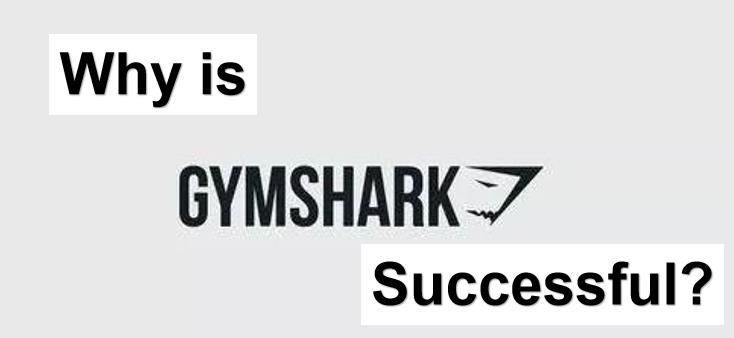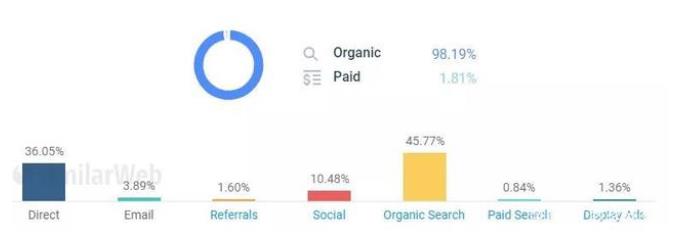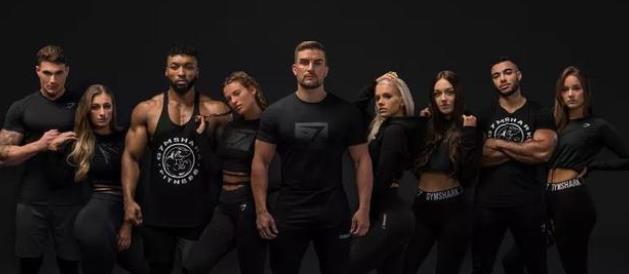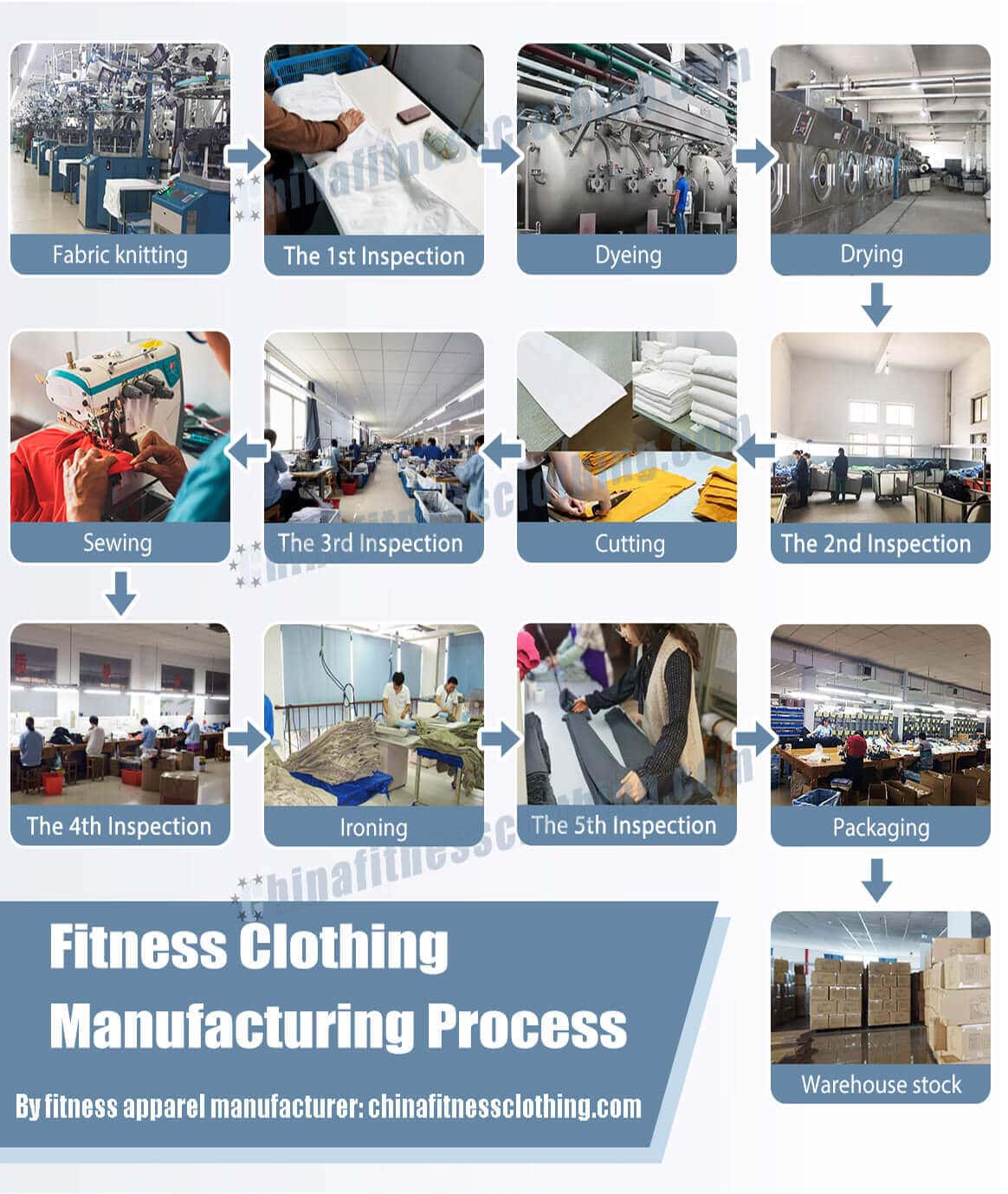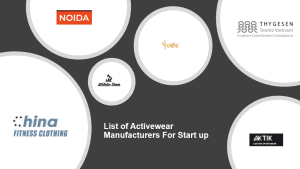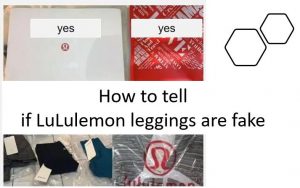Gymshark is a sports and fitness brand born in the UK. Compare with Lululemon’s success, they have many similarities: The same crazy community culture, the same high growth rate from the beginning, and more importantly, they are just as young.
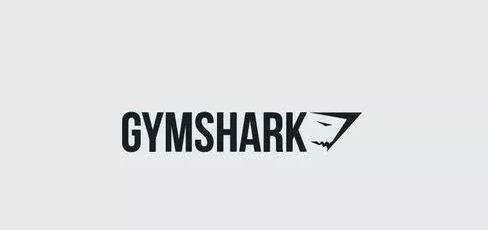
Founded in 2012, Gymshark has now become one of the largest unicorn companies in the world.
Today, Gymshark has been a huge success (and a cult following): it has built a £1.3 billion sportswear empire.
From 2013 to 2016, the compound sales increased by 193% for three consecutive years.
In 2016, Number one in the Sunday Times Virgin Fast Track 100.
Rapid increase in net worth: $108,000 in 2013; In 2014, $1.5 million; $2.5 million in 2015; $3.4 million in 2016; $11.8 million in 2017.
in 2017, $50 million in revenue; In 2018, revenue reached $128 million.
In 2020, a total of £200m was raised in private equity rounds. In 2021, the enterprise valuation exceeded 1.3 billion.
If you do a Google Trends search for Gymshark, you’ll see just how enthusiastic people are about the brand.
Most importantly, Gymshark has evolved and continues to grow using only social media and influencer marketing. This simple marketing mix means that many companies can actually learn from their experience.
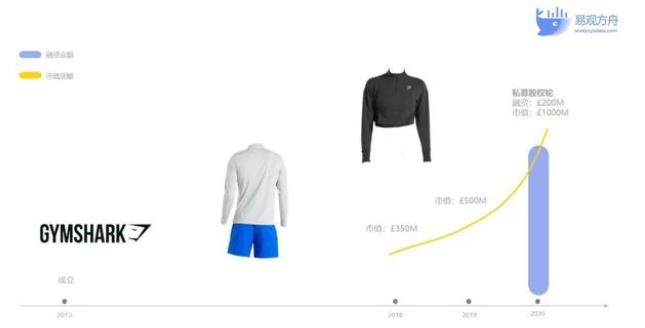
Next, we will find out why Gymshark is successful and how it become one of the fastest-growing companies in the UK.
Before analyzing Gymshark’s strategy, take a look at its journey from an ordinary online store to a global fitness brand with sustained triple-digit growth.
Before analyzing Gymshark’s strategy, take a look at its journey from an ordinary online store to a global fitness brand with sustained triple-digit growth.
1. A brief history of the multimillionaire “Gymshark” Empire:
When Ben Francis was a teenager, he set up an online store to sell car license plates; He made about £8,000 from two fitness tracking apps for the iPhone; Oh! He also worked as a pizza delivery man at Pizza Hut.
In 2012, the idea for Gymshark was born. At the time, he was a 19-year-old student at a full-time school. At first, Francis focused only on health products. Since he started with zero capital, direct selling was his business model of choice. He ships his products directly from other retailers.
“At the beginning, you have to innovate on both the front end and the back end of the business,” he says. It didn’t take long for him to see that the margins were too low for future potential.
So he decided to take another route. Francis admits he doesn’t have any immediate grand business plans. He just thought “it was more of an ‘I really want to wear this’ situation, so I did it.” He also didn’t know how to put a price on things.
“It’s literally a case of what we’re willing to pay for something… There is no considered approach. We were like, ‘We’ll pay 20 pounds’.”With such a weak base, how is it possible for this “little” Gymshark to beat other competitors and become a £400m e-commerce empire?
BodyPower Expo, one of the premier fitness trade shows, is where it all started. This is an important time and idea for Gymshark to move forward. In late 2012, Francis joined BodyPower. He wanted to take Gymshark to upcoming shows and to do so, he almost emptied his bank account to make room on the show floor.
His and his friends’ efforts to develop Luxe fitted sportswear and build the brand name paid off. The product has fueled Gymshark’s growth with orders that they never anticipated.
When they got back from the trade show, they put the product online, and then things went crazy. Within half an hour, they had more traffic and sales than ever before, about $42,000 a day compared to $400 in the past. Following this momentum, Francis and his team began expanding Gymshark.
Another interesting thing about Gymshark is that they sell and ship every product. They invest in building their own warehouses and control the entire supply chain without hiring a third-party logistics company. This sets them apart and ensures they have everything under control.
Six years later, Gymshark is a global brand, manufacturer and online retailer of fitness apparel and accessories, with products sold in 131 countries. They also have 65 million followers, generating such demand for their products that many of their new releases sell out within hours.
Nowadays, due to the impact of the epidemic, people pay more attention to health issues, and the attention to the fitness industry also drives the development of the sports market, with the demand for functional and design sportswear “skyrocketing overnight”. The global sportswear market is estimated to be $181 billion in 2019 and $208 billion by 2025, according to industry data.
Gymshark is also currently rated as the UK’s most profitable private company with annual sales of £250 million.
2.Traffic sources of Gymshark: from search engines to social media
After 2016, Gymshark’s handhold traffic increased over time, peaking at 6.3 million in November 2018, when they ran a major Black Friday event called “Blackout” with up to 70% station-wide discounts.
With their fanatical following and focus on exclusive products, Gymshark uses direct traffic and search traffic as primary traffic drivers, so they don’t have to pay a lot of search fees and still get the majority of traffic.
In addition, quite a bit of direct traffic can be attributed to the word-of-mouth awareness that Gymshark has worked hard on since October 2017 (through pop-up shops and events).
In other words, since many people already know Gymshark by name, they just type Gymshark directly into a search engine. Gymshark generates a lot of brand traffic.
Other popular keywords are often directly related to their products, such as gym shorts and gym wear. Here’s a breakdown of the traffic Gymshark gets from social media:
As you can see, YouTube is a major driver, accounting for more than half of the total traffic. To get traffic from YouTube, Gymshark has created a YouTube channel where they share a selection of inspirational videos from fitness celebrities.
Now that we have a rough idea of where traffic comes from Gymshark.
Why Is Gymshark Successful? What’s the Secret?
Success one: Influencer marketing: Turn fitness bloggers into brand ambassadors
Gymshark’s marketing strategy can be the “methodology” for most new brands. Focus growth around social media and brand strategies to harness the power of community.
Francis works with fitness bloggers and successfully converts them into “brand ambassadors” for Gymshark apparel. Each of these “ambassadors” has millions or even tens of millions of followers on various social media channels. It is better to define them as KOL than “ambassador”, which naturally brings a considerable number of fans to the Gymshark brand.
Success two: Brand community: Be active on social media to build lasting relationships with fans
Gymshark’s growth is largely driven by social networks. They have huge followings on Instagram, Facebook, Twitter, Pinterest, YouTube, and even Spotify. What’s cool is that everything they post, from graphics to video, always looks professional and consistent on these platforms.
Please note that Gymshark does not use social media as a means of generating direct sales. Instead, they aim to build brand awareness and provide value to fans.
- Gymshark Instagram
Every day, Gymshark gets a lot of traffic through Instagram.
In fact, Instagram has been the main focus of Gymshark. Everything else is basically an extension of what they do on Instagram, even though more than 50 percent of their traffic comes from YouTube.
As mentioned above, Gymshark currently has three different Instagram accounts with a total of over 5 million followers.
In the @gymshark primary account, Gymshark does not add any product links but links to advertisements or events. Why is that? Because their main goal is to improve the interaction with their fans, which ultimately drives their sales.
- Gymshark Facebook
Gymshark has over 1.5 million loyal Facebook fans — hungry for branded products. Here, they often share photos of bloggers and brand ambassadors to inspire fans and generate more communication with them.
If the people you follow keep doing the same things day after day, you may get bored quickly and want to unfollow them. But Gymshark is rarely shut down. Their posts are short and simple — only two or three lines of text, and they never use any copywriting techniques.
The coolest part about Gymshark’s Facebook page is that they always include the # Gymshark hashtag in every post. Given that Facebook processes billions of searches every day, using this hashtag clearly helps Gymshark reach a lot of new people.
If posts around a hashtag or activity do well, that’s a direct sign that the topic will be in the spotlight.
- Gymshark twitter
Thousands of people follow Gymshark on Twitter.
Unlike Facebook, Gymshark uses different subject tags in its Twitter posts. If you look at their accounts, you’ll notice that they create a separate theme tag for each day of the week, for example, #MondayMotivation, #TuesdayThought, or #ThrowbackThursday. Each article is accompanied by a highly relevant picture or video.
- Gymshark Pinterest
Pinterest is ideal for fitness/lifestyle e-commerce owners to increase traffic. Here, Gymshark has over 10 million viewers and 400,000 followers per month. To understand what audiences are actually interacting with, Gymshark has also created several Pinterest boards, such as Gymshark Men, Gymshark Women, Purple Passion, and Vital Seamless.
This classification is no accident, as most of these boards correspond to the product line on their site. Need proof? The Vital Seamless page received the most shares, which is also the name of one of their Pinterest boards.
By grouping, Gymshark makes it easy for its fans to view their products and share their content.
- Gymshark YouTube
The majority of Gymshark’s audience is young people aged 18-31
In order to keep these millennial viewers with the brand longer (and forever), Gymshark has decided to tweak its KOL marketing on YouTube a bit.
In addition to showcasing brand activities, it is hoped that these bloggers will add more thematic content based on product/brand values to their videos to encourage potential viewers to subscribe to their channels.
The first step in making this change is sharing behind-the-scenes videos about their brands, campaign ambassadors or other prominent figures. Not ashamed to share their highs and lows, try to keep the work transparent and relevant. It’s a great way to give fans something new, to better connect with them and build trust.
- Gymshark Spotify
It is likely that most gyms will use Spotify to reach a wider audience. Gymshark has known this for a long time and has thus developed a deeper connection with its fans while using Spotify.
Gymshark uses Spotify to create motivational playlists that drive people to the gym and get their workout done! Notice the way they name playlists. Each playlist name always starts with a Gymshark followed by the athlete’s name or workout type.
By doing so, Gymshark can make new connections with its fans every day and help them improve their lives as promised.
The bottom line: Consumers react differently to an AD campaign on Facebook than to the same AD campaign on Instagram.
So figure out what your tone needs to be on each channel, and make sure you’re delivering the right message — in terms that those fans want to see or read. Don’t be lazy — spread the same content across all social media platforms — because it’s easy.
At the same time, use all channels to increase brand exposure. Use channels to create a huge buzz for your brand.
Remember: Maintain professional consistency across all channels.
Success three: Marketing strategy: Use Black Friday to sell 90% of products in one day.
On Gymshark’s Blackout FAQs page, they say, “It’s safe to say we have very little direct marketing.”
“When we [Gymshark] do direct marketing, we tend to target bigger targets.”
Just kidding, but it’s true!
Every year, Gymshark offers two major sales for consumers, and Black Friday is one of them. In November 2017, they ran a very successful Black Friday event, which resulted in an influx of orders.
To ensure that it maximizes brand awareness and sales at this important retail event, Gymshark has designed a robust marketing campaign in partnership with The Facebook Creative Store.
The brand decided to take the opposite approach to its previous advertising strategy. Instead of using bright posters, they switched to dark images.
Gymshark kicked off its Black Friday sale on Monday and continues for a week (called “blackout”), distributing a different set of content each day. The Black Out event features models wearing Exclusive Black Friday products from Gymshark and even showcases UGC creations from participating fans. A combination of Instagram ads was used, including Stories ads in the Instagram feed, rotating ads, and dynamic ads.
At this point, a question was raised: why does Gymshark extend sales to 7 days instead of the normal 1 day? There are two main reasons.
First, their potential customers don’t have to spend their hard-earned cash on different sales, which means they can buy more from Gymshark.
Second, a one-week sale means they are more likely to get more customers.
Success four: perfect bridge the gap between online and offline, sales accurately reach the location of consumers
In order to differentiate itself from its competitors and cut through the online buzz, Gymshark has built its own brand community and has done well.
1 Gymshark Central blog to create more value for consumers
Using the Gymshark Central blog as a hub makes it easy for new and returning customers to enter their community without any heavy lifting.
Gymshark Central is full of articles containing tips, tutorials, and recipes that provide consumers with useful information about health and fitness.
By offering this service, Gymshark has clearly positioned itself as the preferred source of health and fitness for fans, while consumers make purchasing decisions easier after reading their articles.
2Open pop-up stores to reach more people, build popularity and increase income
At its core, Gymshark has always been a brand that wants to communicate with its customers face to face. After attending trade shows for a few years, Gymshark realized that this was not the best way to create the best face-to-face experience.
They decided to stop holding trade shows and try pop-up shops instead. They’re trying to maintain the same experience they’ve had at trade shows in the past, while inviting their popular brand ambassadors to meet face-to-face with fans.
By doing so, it can raise awareness of its new products, cultivate fan loyalty, promote product sales, and make it easier for fans to get free product return services.
There are many reasons why pop-up stores beat out permanent brick-and-mortar stores, which is why Gymshark chooses them. Such as:
- Cheaper: You have to pay for space, design, and staff, but the short-term costs are much lower than the long-term costs.
- More portable: Stores can be located exactly where consumers are — almost anywhere. If a location doesn’t work or doesn’t generate enough profit, it can always move elsewhere.
- More flexibility: The area can be shrunk and expanded as needed, depending on the number of fans likely to visit.
- Lower commitment: It can be opened separately for a sales event or some other event.
Conclusion: 4 Key points Why IS Gymshark Successful
Whether you’re working in e-commerce or a completely different industry, there are four strategies you can borrow from Gymshark and try out. Here are four key takeaways:
- Work with the right KOL. Turn them into your ambassadors, help them achieve their goals, work with them to build your products, and they will be with you forever.
- Focus on developing brand-independent social accounts. Choose whatever platform you think has the potential and fits your business. Then, find the types of posts your target consumers are most likely to be interested in.
- Don’t ignore the impact blogs can have on your brand. It’s a great way to connect with consumers, offer them more value, and build trust.
- Put your product directly in front of consumers. Sometimes, you need to give consumers (at least) one “touch” of your product so they can feel more confident buying from your online store in the future.
By doing so, you can also create a large group of fanatical and loyal fans of your own fitness apparel. What are you waiting for?

